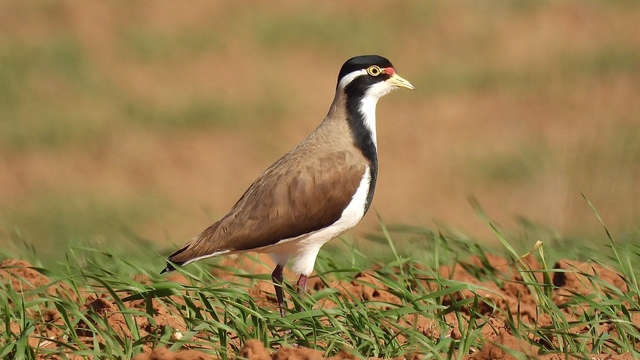WHAT BIRD IS THAT with Paul Taylor
Occasionally, names of some birds are changed. Classification can be altered with recent advances in ornithology, resulting in a different scientific name. And sometimes the common (or vernacular) names of birds are also changed.
An example is lapwing and plover. Technically, they are in the same family, but lapwings are treated as a semi-separate group, scientifically known as a subfamily (there are also a few local plovers, generally smaller than lapwings and found on the coast).
There are two widespread Australian lapwings, and both are seen on the Adelaide Plains and in the Mid North. The banded lapwing used to be called the banded plover, and the masked lapwing was the spur-winged plover.
Masked Lapwings do have a small sharp spur on the front of each wing (not always visible). Masked and banded lapwings have fleshy features called wattles.
Masked lapwings has a large yellow wattle on its face, and banded a small red one in front of its eyes.
They also have other things in common. Both are noisy with loud ringing calls, heard during the day and sometimes on calm, moonlit nights.
Their nests are a simple scrape on the ground, and three or four well camouflaged eggs are laid. After a long incubation of about a month, chicks hatch and can run soon after.
Adults vigorously defend their nest and young by swooping intruders. A broken wing act is also used as a distraction.
Masked lapwings are usually near water, fresh or salt. They are often seen in towns, and nest on any open area including football ovals.
Banded lapwings are mostly seen in farmers’ paddocks. They have declined in recent decades, but still occur in reasonable numbers around Bowmans and South Hummocks.
Although they tolerate dry conditions, in hot weather banded lapwings often congregate on undisturbed beaches around northern Gulf St. Vincent.
In my early days of farming, when fallowing was a general practice, this often coincided with the banded lapwing’s breeding season. I had to be on the lookout as this involved driving around nests of eggs.
Now with a lot of continuous cropping, some lapwings have adapted to nesting in recently emerged crops, with some success. Coincidentally, it just so happened that this change in cropping practice was around the same time as the change of name from plover to lapwing.







